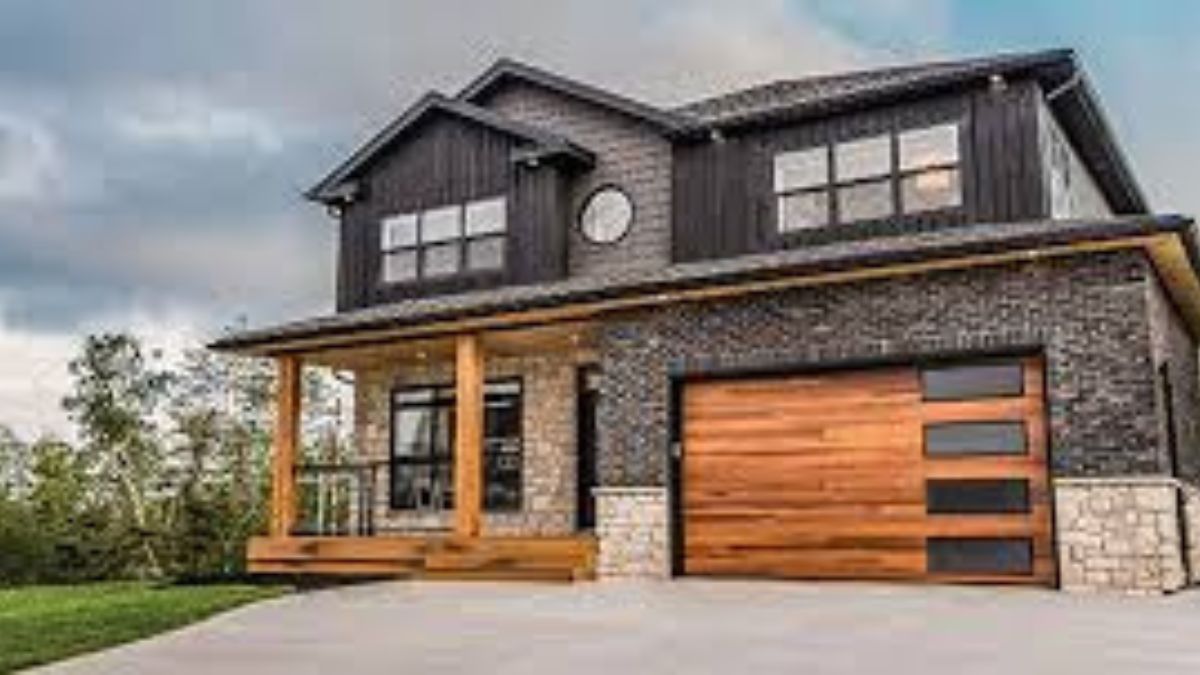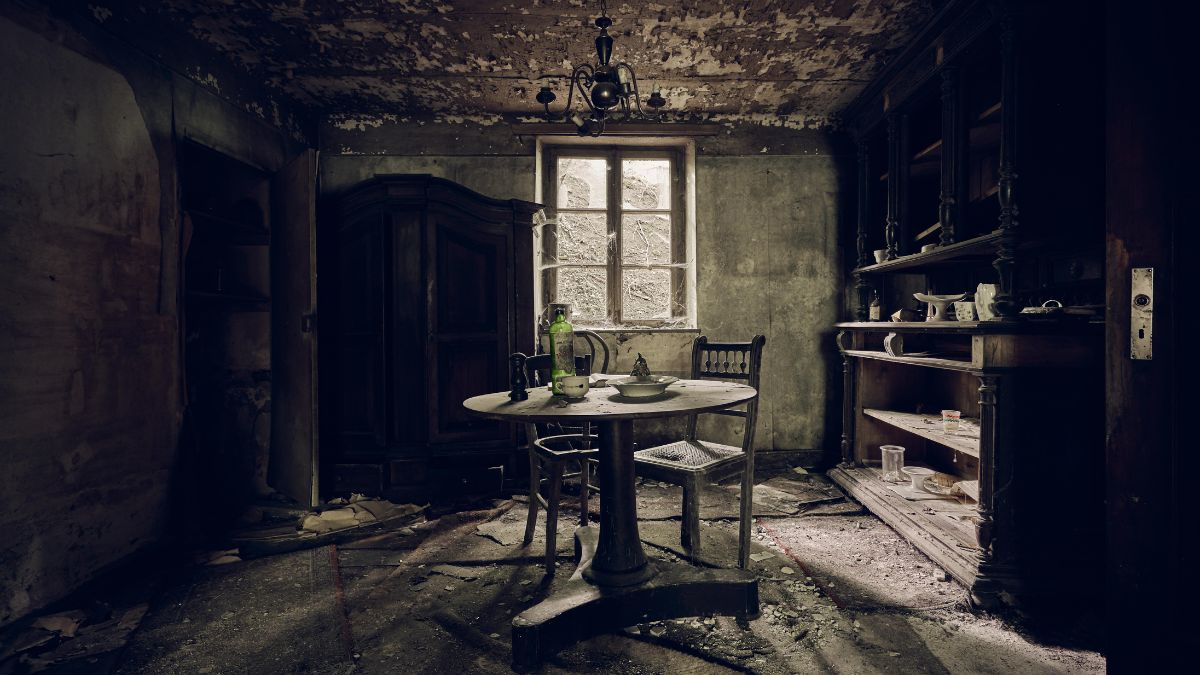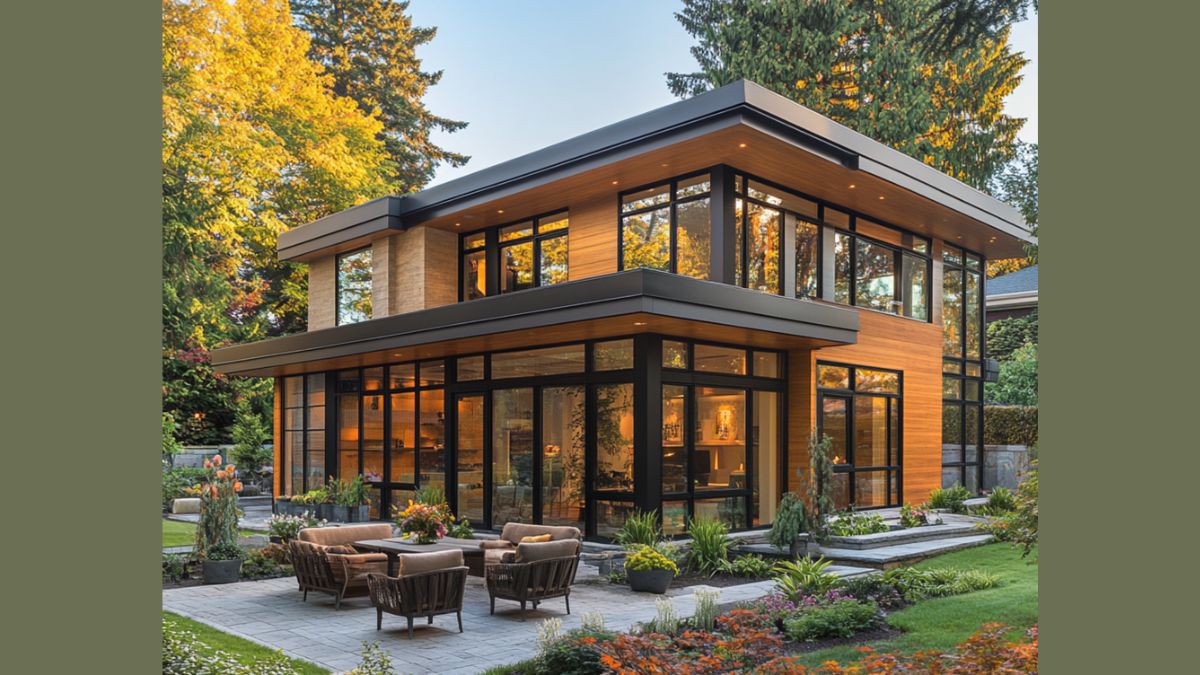HOME IMPROVEMENT
The Benefits of Upgrading Your Garage Doors: A Smart Investment

Introduction to Garage Door Upgrades
Investing in new garage doors is more than just a functional enhancement—it’s a savvy decision with numerous rewards for homeowners and businesses. Whether upgrading residential or commercial garage doors, modern enhancements provide tangible benefits that make them worthwhile. Today’s garage doors are high-tech, offering benefits beyond appearances.
From aesthetic improvements to advanced security features, upgraded garage doors present an opportunity to elevate property values and personal convenience. The following sections unravel the diverse benefits, ranging from reducing utility bills to lowering your environmental footprint and enhancing everyday convenience—ensuring long-term savings and satisfaction.
Increased Home Value
A visually appealing home exterior is crucial for property valuation, and residential garage doors significantly enhance curb appeal. A modern, stylish garage door can transform an outdated façade, making it more attractive to potential buyers and justifying a higher market price. Many real estate experts recommend replacing residential garage doors as one of the best home improvement projects for a good return on investment, often recovering a substantial portion of the cost once the home is sold.
Imagine driving up to a house and first noticing its sleek, modern garage doors. This initial impression is powerful, often affecting overall perceptions of cleanliness, organization, and modernity. By upgrading your garage doors, you enjoy a refreshed aesthetic and ensure potential buyers see your property as well-maintained and contemporary.
Improved Energy Efficiency
Energy efficiency is a priority for modern homeowners, and garages are responsible for significant energy losses. New garage doors typically incorporate enhanced insulation, which minimizes the energy needed to regulate the garage’s temperature. Numerous models are now designed with sophisticated weather seals that combat air leakage, reducing energy expenses over time.
Moreover, efficient garage doors can maintain temperature control, which is crucial if your garage is attached to your home and used for more than just storage. The energy savings realized through enhanced insulation align perfectly with the broader push toward sustainable living. Start planning energy-efficient upgrades by exploring Energy.gov’s comprehensive guide on energy-efficient home design.
Enhanced Security
Security is integral to every property owner’s peace of mind. Upgraded garage doors are designed with robust security features, including reinforced materials and innovative locking systems that resist tampering. For homeowners, the garage is often a direct entry into the living space, making security a priority. Advanced technologies such as motion detectors and connectivity that let you monitor access from a mobile device add a new layer of safety.
Protecting assets is critical for commercial properties. Upgraded doors deter theft with sophisticated locking mechanisms and durable construction. With threats evolving, having state-of-the-art features can mean the difference between safety and vulnerability.
Reduced Maintenance
Maintenance is often a hidden cost of garage doors, but modern materials greatly minimize this concern. Today’s garage doors are constructed using durable, weather-resistant materials that require much less upkeep. Composite materials, treated woods, and rust-proof metals ensure longevity and consistent performance.
Older doors might require regular paint jobs or part replacements due to wear and tear, while newer models have finishes that retain their look for years. This reduction in maintenance is not only convenient but ultimately saves money, keeping your garage doors looking and functioning like new.
Noise Reduction
Garages can be loud, especially with older systems that creak and groan with each use. Modern garage doors have been designed to reduce this noise significantly. From quieter motors to smoother rollers, these updated systems operate with minimal sound disruption, adding to homeowner comfort.
This benefit is particularly appreciated in homes where the garage is adjacent to living areas or bedrooms. Now, late-night returns won’t disturb family members or neighbors, creating a more peaceful home environment.
Smart Technology Integration
Integrating innovative technology into garage doors transforms how we think about home access. Innovations such as remote access, smartphone notifications, and integration with smart home ecosystems offer unprecedented convenience. For defenders of a connected world, these technologies ensure that your home’s access points are secure, monitored, and responsive.
Imagine forgetting to close the garage and receiving a notification on your phone or granting temporary access to a neighbor while you’re away—all possible through technology.
Environmentally Friendly Options
In today’s eco-conscious era, having environmentally friendly construction options is vital. Modern garage doors can be crafted from recycled materials and designed with green manufacturing processes. These sustainable doors offer the same quality and appearance as traditional options but align with broader environmental goals.
Choosing these doors is a positive step toward reducing your carbon footprint while maintaining the high-quality standards expected from a new installation. They have a symbiotic relationship between benefit and responsibility, providing premium enjoyment without compromise.
Conclusion
Upgrading your garage doors is a wise investment that offers numerous benefits, from enhanced property value to modern conveniences like energy efficiency and intelligent integration. As this article explores, the financial, practical, and aesthetic gains make this decision sound and satisfying. The advantages of garage doors, whether for residential or commercial use, are evident and persuasive, promoting a proactive strategy that corresponds with present requirements and future goals.
HOME IMPROVEMENT
How to Outsmart Wonderland: Tips for Beating Alice’s Dream Escape Room

Imagine stepping into a world where reality feels like a memory and logic bends like a funhouse mirror. In Alice’s Dream Escape Room, you face clever puzzles that twist classic tales. To conquer what some call the best Las Vegas escape room, you must sharpen your mind and trust your instincts. Every choice counts. Focus on teamwork. Solve riddles quickly. Stay calm under pressure. Successful adventurers often embrace three strategies. First, communicate freely with your team. Second, search every corner for hidden clues. Lastly, recognize patterns that repeat. This escape room challenges you to think differently. Each minute brings new surprises and moments of discovery. Mistakes teach you what to try next. When the time runs out, victory or defeat feels thrilling. Whether you win or lose, the experience is unforgettable. Are you ready to embrace the whimsy and craft your own success story in this curious world?
Understanding Escape Room Mechanics
Escape rooms simulate adventure and challenge. You have limited time to solve puzzles and unlock doors. Each room offers unique themes that require different skills. Knowing common room mechanics helps you prepare. You might encounter locks, codes, and puzzles. Some puzzles need logic. Others need physical activity. Often, time management and task delegation are crucial.
Proven Strategies for Success
- Teamwork: Teams that talk openly solve puzzles faster. Share discoveries with your group. Everyone’s insight matters.
- Observation: Inspect every detail. Clues often hide in plain sight. Check walls, shelves, and under objects.
- Time Management: Keep track of time. Assign roles to team members. Someone should watch the clock.
Communication and Collaboration
Effective communication can mean the difference between winning and losing. Encourage your team to voice ideas. Even uncertain thoughts can lead to breakthroughs. Establish a system for discussing findings. Assign someone to act as the point of communication to prevent chaos. This role involves collecting information and guiding team efforts. Encourage questions. Foster an inclusive atmosphere where everyone feels comfortable contributing.
Common Puzzles and Solutions
Familiarizing yourself with typical escape room puzzles boosts confidence. Below is a comparison table for common puzzles and suggested approaches:
| Puzzle Type | Suggested Approach |
| Word Puzzles | Look for patterns in words. Rearrange letters if needed. |
| Number Locks | Focus on patterns and sequences. Consider math operations. |
| Physical Tasks | Use teamwork for tasks needing dexterity or strength. |
| Visual Clues | Look for oddities in pictures or decor. Connect visuals to concepts. |
Resources for Improving Problem-Solving Skills
Developing problem-solving skills enhances escape room readiness. Engage with puzzles and logic games at home. Websites like NASA STEM provide valuable educational resources for sharpening these skills. Regular practice with riddles and strategy games builds confidence and improves cognitive ability.
Managing Stress and Enjoying the Experience
An escape room should challenge you but also provide fun. Embrace the experience. Don’t let stress overshadow enjoyment. If a puzzle feels too difficult, take a moment to reassess. Sometimes, stepping back offers a new perspective. Encourage each other and celebrate small wins. Remember, the goal is enjoyment and team bonding, not just winning.
Final Thoughts
An escape room adventure like Alice’s Dream requires a mix of skill, collaboration, and strategy. By preparing thoughtfully and maintaining open communication, your team can enhance its chances of success. Whether you escape or not, the shared experience of problem-solving and teamwork offers rewards beyond the room itself. Dive into the challenge with enthusiasm, and enjoy the journey in a world where nothing is as it seems.
HOME IMPROVEMENT
The Hidden Hero: How Modern Fiberglass is Revolutionizing Home Style and Durability

When most people think about fiberglass manufacturing and supplies, images of boat hulls or industrial applications might spring to mind, but the reality is that today’s fiberglass manufacturing and supplies industry has quietly become the unsung hero of modern home design. Like the talented understudies who steal the show on Broadway, fiberglass has stepped out from behind the scenes to become a leading player in creating homes that are not just beautiful, but brilliantly practical.
Gone are the days when fiberglass was relegated to purely functional roles. Today’s homeowners are discovering that fiberglass innovation across industries has evolved into sophisticated applications that bring both aesthetic appeal and remarkable durability to residential spaces. Think of it as the Swiss Army knife of building materials, offering versatility that would make even the most multi-talented lifestyle influencer envious.
The transformation of fiberglass from industrial workhorse to design darling mirrors how quinoa went from health food store oddity to mainstream superfood. What was once considered purely utilitarian has been reimagined through modern window materials and home applications that blend performance with style in ways that would have seemed impossible just a decade ago.
The Style Revolution Nobody Saw Coming
Modern fiberglass applications in home design operate like a master chef who can make vegetables taste like dessert while keeping all their nutritional value. Today’s fiberglass components deliver stunning visual impact while maintaining the durability and low maintenance characteristics that make them practical choices for real-world living.
Window frames crafted from contemporary fiberglass offer the warm, natural appearance of painted wood without the constant maintenance demands. These frames resist warping, splitting, and fading while providing superior energy efficiency that keeps homes comfortable year-round. The material’s ability to expand and contract at rates similar to glass makes it an ideal partner for modern high-performance windows.
Exterior cladding systems using fiberglass technology create façades that can mimic virtually any architectural style, from sleek contemporary designs to classic traditional looks. The material’s moldability allows manufacturers to create intricate details and textures that would be prohibitively expensive or impossible to achieve with traditional materials.
The Durability Factor That Changes Everything
Living with fiberglass components in your home feels like having a reliable friend who never lets you down, even in challenging circumstances. Unlike materials that require constant attention and seasonal maintenance, modern fiberglass applications maintain their appearance and performance through years of weather exposure, temperature fluctuations, and daily use.
The secret lies in the material’s inherent resistance to moisture, insects, and UV radiation. Where wood might rot, warp, or require regular painting, fiberglass maintains its integrity and appearance with minimal intervention. This durability translates into long-term value that goes beyond initial cost savings to include reduced maintenance time and expenses over the product’s lifetime.
For busy families juggling work, school activities, and social commitments, the low-maintenance nature of fiberglass components provides a practical luxury that frees up time for more enjoyable pursuits. Instead of spending weekends scraping and painting window trim, homeowners can focus on creating memories with family and friends.
Energy Efficiency That Actually Matters
Modern fiberglass applications function like a well-tailored coat that looks great while keeping you perfectly comfortable in any weather. The material’s thermal properties create natural insulation that helps maintain consistent indoor temperatures while reducing energy consumption.
Fiberglass window frames contribute significantly to overall home energy efficiency through their low thermal conductivity and tight seals. These characteristics help prevent the air leaks and thermal bridging that can make even well-insulated homes uncomfortable and expensive to heat or cool.
The environmental benefits extend beyond energy savings to include the material’s longevity and recyclability. Choosing fiberglass components means fewer replacement cycles and reduced environmental impact over the long term, aligning with sustainable living principles that resonate with environmentally conscious homeowners.
Design Flexibility That Inspires Creativity
Working with modern fiberglass feels like having access to a design medium that can become whatever you envision. The material’s moldability and finish options enable architectural details and aesthetic choices that would be challenging or impossible with traditional materials.
Contemporary manufacturing techniques allow fiberglass components to achieve the appearance of wood grain, stone textures, or smooth contemporary finishes while maintaining their performance advantages. This versatility enables homeowners to achieve their desired aesthetic without compromising on practical considerations.
Custom color options and specialty finishes make it possible to create truly personalized exterior designs that reflect individual style preferences. Whether the goal is seamless integration with existing architectural elements or bold contemporary statements, fiberglass applications provide the flexibility to achieve diverse design visions.
The Smart Investment Perspective
Choosing modern fiberglass applications represents the kind of smart financial decision that delivers both immediate satisfaction and long-term value. Like investing in quality furniture that improves with age, fiberglass components provide upfront appeal while delivering ongoing benefits through reduced maintenance costs and extended replacement cycles.
The initial investment in quality fiberglass components often pays for itself through energy savings and reduced maintenance expenses. When factoring in the time savings from eliminated painting and repair tasks, the value proposition becomes even more compelling for homeowners who value both their time and their money.
Insurance benefits may also apply, as some carriers recognize the durability and fire resistance characteristics of fiberglass materials with reduced premiums or coverage advantages. These financial incentives make fiberglass applications attractive from both practical and economic perspectives.
Installation and Integration Advantages
Modern fiberglass components install with the precision of well-engineered products designed for contemporary construction methods. The material’s stability and dimensional consistency eliminate many of the fitting challenges associated with natural materials that can vary in size and shape.
The lightweight nature of fiberglass components simplifies installation while reducing structural loads on existing buildings. This characteristic makes fiberglass applications particularly valuable for renovation projects where weight considerations might otherwise limit design options.
Compatibility with modern construction techniques and building systems ensures that fiberglass components integrate seamlessly with contemporary insulation, weather barrier, and finishing systems. This compatibility reduces installation complexity while improving overall system performance.
Future-Proofing Your Home
Investing in modern fiberglass applications feels like choosing a smartphone that will remain current for years rather than becoming obsolete in months. The material’s proven durability and adaptability position homes for long-term performance and value retention.
As building codes and energy efficiency standards continue evolving, fiberglass components often exceed current requirements while providing flexibility for future upgrades or modifications. This forward-thinking approach protects homeowners from costly updates needed to meet changing standards.
The growing recognition of fiberglass applications in residential construction suggests that homes featuring these materials will align with future market preferences for low-maintenance, energy-efficient properties. This alignment supports long-term property values while providing immediate lifestyle benefits.
Modern fiberglass manufacturing and supplies have evolved far beyond their industrial origins to become sophisticated tools for creating homes that are both beautiful and brilliantly practical. Like the best lifestyle choices, these applications deliver immediate satisfaction while providing long-term benefits that enhance daily living. For homeowners seeking materials that combine style, durability, and smart economics, fiberglass represents a compelling choice that supports both current needs and future aspirations.
HOME IMPROVEMENT
Splash Into Style: Transforming Your Space With a Soul-Refreshing Bathroom Upgrade

The journey of a complete bathroom renovation often begins with a dripping faucet or a tile crack that catches your eye one random Tuesday morning. Before you know it, you’re deep-diving into inspiration photos and imagining how a thoughtful modern bathroom renovation could transform not just your physical space, but your daily rituals as well. This transformation isn’t merely cosmetic; it’s about creating a sanctuary where you can escape the world’s chaos, even if just for a steamy shower or a leisurely soak.
The Psychology Behind Your Bathroom Blues
Let’s be honest, bathrooms have a peculiar power over our mood. That avocado-green tub from 1975 might have character, but does it spark joy when you’re trying to unwind after a stressful day? Bathroom spaces affect us on a subconscious level that few other rooms can match.
“I never realized how much my old bathroom was draining my energy until I renovated,” confesses interior stylist Mara Jenkins. “The constant mental notes about things needing repair were like tiny little vampires sucking away my peace of mind.”
Think about it: your bathroom is where you both begin and end each day. It’s the backdrop for your morning pep talks in the mirror and those late-night skincare rituals you picked up from social media. A bathroom renovation isn’t just about updating fixtures; it’s about honoring these intimate moments that bookend your days.
Budget-Friendly Bathroom Brilliance
The words “bathroom renovation” often trigger visions of emptying bank accounts faster than water swirling down a drain. But transformative changes don’t always require second mortgages. The secret lies in knowing where to invest and where to get creative.
“The smartest bathroom renovation I ever did cost less than half what I expected,” shares home blogger Jordan Chen. “I kept the original layout, which saved thousands in plumbing work, then splurged on a statement vanity that everyone notices the moment they walk in.”
Consider this strategic spending approach:
Focus major funds on elements that withstand water and frequent use: quality tile, proper waterproofing, and reliable fixtures will outlast trendy accessories.
Next, allocate a reasonable amount for features that affect your daily experience, like a rainfall showerhead or heated flooring in colder climates.
Finally, save on elements easy to update later: wall color, cabinet hardware, and decorative elements can be refreshed without calling a contractor.
This tiered approach ensures your bathroom renovation dollars flow toward lasting quality while allowing flexibility for future style updates.
The Layout Liberation
Your bathroom’s current footprint may feel as unchangeable as your height, but creative layout adjustments during renovation can transform functionality without moving walls.
“My bathroom was basically a corridor with fixtures lined up like soldiers,” recalls home renovator Sam Taylor. “During our bathroom renovation, we simply rotated the tub placement and suddenly had room for a double vanity. It feels twice as large now, though we didn’t add a single square inch.”
Before demolition begins, try this paper template trick: measure your bathroom exactly, then create scaled paper cutouts of toilets, vanities, showers, and tubs. Play with arrangements on your scaled floor plan like it’s a puzzle. You might discover that shifting your shower by just 10 inches creates space for that linen cabinet you’ve been dreaming about.
Remember that plumbing can often move more easily than you think during a bathroom renovation, especially if you’re on a ground floor or have accessible space below.
The Illumination Revelation
Lighting is the unsung hero of bathroom renovation, capable of transforming a cave into a spa retreat without moving a single wall.
“Most bathroom lighting is designed by people who clearly never apply makeup,” jokes beauty influencer Aisha Reynolds. “My bathroom renovation priority was creating lighting that actually helps rather than hinders my morning routine.”
The secret to bathroom lighting isn’t just brightness; it’s thoughtful layering:
Ambient lighting provides general illumination so you don’t bump into things.
Task lighting focuses bright, shadow-free light exactly where you need it for shaving, makeup application, or checking if you got all the shampoo out of your hair.
Accent lighting adds drama and warmth, making your post-renovation bathroom feel less clinical and more like a relaxing retreat.
When planning your bathroom renovation lighting, think beyond the standard vanity light. Consider waterproof recessed lights above the shower, LED strips under floating vanities, or even a small chandelier if ceiling height permits. Just remember that all bathroom electrical work must meet strict safety codes, so this isn’t the place for DIY experimentation.
Storage Solutions That Don’t Sacrifice Style
The average person owns 20-40 bathroom products, yet many bathrooms seem designed with storage for about seven items. A thoughtful bathroom renovation addresses this disconnect.
“Before our bathroom renovation, my skincare products were stored in three different rooms,” admits self-described product junkie Carlos Mendez. “Now everything has a dedicated home within arm’s reach, which actually resulted in me using fewer products because I can see what I have.”
Think beyond the standard vanity during your bathroom renovation planning:
Recessed medicine cabinets utilize the cavity between wall studs for storage that doesn’t protrude into the room.
Floating shelves above the toilet transform previously wasted wall space into display-worthy storage.
Custom niches built into shower walls keep essentials accessible without cluttering the edges of your tub.
Drawer dividers and organizers multiply the usefulness of existing storage spaces.
The best bathroom renovation storage solutions blend seamlessly with your aesthetic while containing the chaos of everyday life.
Material Matters: Choosing Surfaces That Last
The bathroom environment is uniquely challenging: constant moisture, temperature fluctuations, cleaning chemicals, and heavy use put materials to the ultimate test. Smart bathroom renovation planning prioritizes durability alongside beauty.
“I learned the hard way that bathroom materials can’t be chosen purely for looks,” admits second-time renovator Jamie Williams. “My first bathroom renovation featured gorgeous matte marble that looked spectacular for about three months before etching, staining, and maintenance became a part-time job.”
For floor and shower tiles, porcelain offers marble-like beauty with superior resilience. Larger tiles mean fewer grout lines to clean, though small mosaic tiles provide more slip resistance on shower floors.
Quartz countertops resist moisture, stains, and bacteria without the sealing requirements of natural stone. For those on tighter bathroom renovation budgets, solid-surface materials offer similar benefits at lower price points.
Cabinet materials should withstand humidity without warping; solid wood or quality plywood with water-resistant finishes perform well. Avoid MDF or particleboard, which can swell irreparably when exposed to moisture.
The Green Bathroom: Eco-Friendly Renovation Approaches
Bathrooms are resource-intensive spaces, typically accounting for more than half of a home’s water usage. A thoughtful bathroom renovation offers opportunities to reduce environmental impact while actually improving your experience.
“Our bathroom renovation cut our water bill by 30% while giving us a much better shower experience,” reports eco-conscious homeowner Riley Patel. “The low-flow fixtures have advanced so much in recent years; there’s no longer a trade-off between conservation and comfort.”
Consider these eco-friendly bathroom renovation strategies:
WaterSense-certified toilets, faucets, and showerheads deliver satisfying performance while using significantly less water.
Motion-sensor faucets eliminate wasteful running water during teeth brushing or face washing.
LED lighting dramatically reduces energy consumption while providing superior color rendering.
Locally-sourced or recycled materials reduce transportation emissions and divert waste from landfills.
Low-VOC paints and sealants improve indoor air quality while protecting your surfaces.
These sustainable choices often add minimal cost to your bathroom renovation budget while delivering long-term savings and healthier living spaces.
Tackling Timeline Realities
Perhaps you’ve heard the renovation horror stories: the three-week bathroom renovation that stretched into three months, the family of five sharing a single bathroom during unexpected delays, the daily negotiations with contractors who seem to have vanished.
“The biggest mistake in our bathroom renovation wasn’t design-related but timeline-related,” shares renovation veteran Eliza Harmon. “We had unrealistic expectations about how quickly work would progress and didn’t build in buffer time for inevitable surprises.”
A realistic bathroom renovation timeline depends on scope, but generally follows this pattern:
Planning and design: 2-4 weeks for gathering ideas, consulting professionals, and finalizing plans.
Ordering materials: 2-6 weeks for fixtures, custom items, and specialty materials to arrive.
Demolition: 1-3 days to remove existing fixtures and finishes.
Rough-in work: 2-5 days for plumbing and electrical adjustments.
Waterproofing and prep: 1-3 days depending on shower size and complexity.
Tile installation: 2-7 days depending on layout complexity and tile size.
Fixture installation: 1-2 days for vanities, toilets, and hardware.
Finishing touches: 1-3 days for painting, cleanup, and final details.
Add at least a 20% time buffer for unexpected issues, and consider that sequential tasks might require coordination between different specialists, creating natural pauses in the process.
The Final Flourish: Details That Define
Once the dust settles from your bathroom renovation, it’s the thoughtful details that will elevate the space from “new bathroom” to “personal sanctuary.”
“After our bathroom renovation was technically complete, it still felt like a display model,” recalls design enthusiast Morgan Lee. “It wasn’t until we added the less functional elements—art, plants, special soaps—that it truly felt like our space.”
Consider these finishing touches for your newly renovated bathroom:
Natural elements like wooden bath mats or small potted plants bring life and warmth to typically hard-surfaced bathrooms.
Personal artifacts—perhaps a shell collected from a memorable beach vacation or a vintage perfume bottle from your grandmother—add meaning and story.
Textiles with personality, from an unexpected shower curtain pattern to plush towels in your favorite color, soften the space.
Coordinated accessories like soap dispensers, toothbrush holders, and tissue covers create cohesion without requiring permanent commitment.
Proper lighting for these elements ensures they read as intentional design choices rather than afterthoughts.
Begin With The End In Mind
Before the first tile is selected or wall is demolished, take time to envision how your completed bathroom renovation will support your ideal daily experience. Will it energize your mornings? Soothe your evenings? Impress your guests? Adapt to changing needs?
The most successful bathroom renovations aren’t just about creating beautiful spaces, but functional environments that seamlessly support life’s most personal routines. When the project concludes, your new bathroom shouldn’t just look different—it should feel different, elevating ordinary moments into experiences worth savoring.
-

 BLOG1 year ago
BLOG1 year agoATFBooru: A Hub for Animated Art and Community
-

 CONSTRUCTION1 year ago
CONSTRUCTION1 year agoBuilding a Home Gym in Your Basement (7 Key Renovation Tips)
-

 BLOG1 year ago
BLOG1 year agoFictionmania: A Deep Dive into the World of Transformative Stories
-

 GAMES1 year ago
GAMES1 year agoSnow Rider 3D: Unblocked Tips and Tricks for Gamers
-

 LIFESTYLE12 months ago
LIFESTYLE12 months agoVersatile Living: Stylish Indoor Outdoor Rugs with Eco-Friendly Appeal
-

 BLOG1 year ago
BLOG1 year agoGIFHQ: A Comprehensive Guide
-

 BLOG1 year ago
BLOG1 year agoVincent herbert new wife: A Detailed Overview
-

 LIFESTYLE12 months ago
LIFESTYLE12 months agoAchieve Elegance with Chic Blue Formal Dresses and Redken Professional Hair Care for All Hair Types
